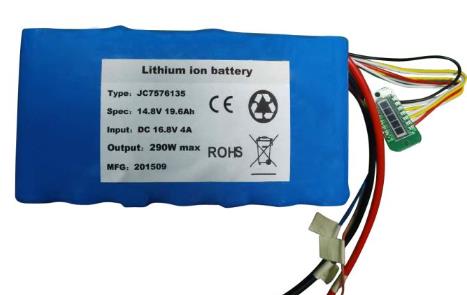As we all know, commercial and home lighting is the largest market for LED lighting in the future. At present, in the field of commercial and household LED lighting, the mainstream is not to change the basic installation structure of the original white heat bulb and halogen lamp, but only replace the traditional illumination source with LED light source. Li Zhiyuan, marketing manager for the Asia Pacific region of National Semiconductor Corporation (NSC), pointed out that in the field of home or commercial lighting, the mains input LED driver and DC input LED driver will choose the corresponding solution according to the basic architecture of different power supply. He introduced that NSC mains input drivers are LM3444, LM3445, LM3450; LM3445 and LM3450 can be used with TRIAC thyristor dimmer; DC input driver has LM340X series step-down constant current driver; LM342X is boost or l/ Buck constant current drivers are available. In addition, the above mentioned the use of LED light source instead of 30W-50W halogen lamps powered by high-frequency electronic transformers, such as AR111 and MR16, but when the electronic transformer is equipped with LED drive circuit, there will often be flashing lights or damage to the electronic transformer. Two major problems, so the market hopes to have a mature LED driver solution to solve this problem. Li Zhiyuan introduced that NSC also introduced the LM3492 driver for this problem. This solution can simulate the traditional halogen lamp resistance load characteristics to solve the problem of light flashing and damage to the electronic transformer. In view of the fact that the current AC input LED driver is highly respected by some Korean and Taiwanese manufacturers, Liu Xuechao, business development manager of high-performance analog products of TI Semiconductor Division, said: "There are some technical problems that need to be solved in the AC input LED driver. At present, it cannot be asserted that it is Future Trends." Wen Maoqiang, technical director of Changyuntong Optoelectronic Technology Co., Ltd., is more sharp. He said: "All LED drivers are working in DC. The LED driver of the mains input constant current output is rarely designed in this way. The integrated rectifier bridge process is integrated. The cost is not allowed, and the mains input LED driver has no market value." Wen Maoqiang said that the current development direction of LED drivers is not uniform, it is difficult to distinguish. Changyuntong Optoelectronics advocates the development of a "distributed constant current" architecture, and both high-voltage mains and DC drives can be perfectly balanced. He introduced that the reason why the distributed constant current technology has high reliability is that the AC power supply part continues to use the conventional switching power supply, and the constant voltage power supply mode is adopted. The accumulation of switching power supply technology will create quality conditions for LED power supply design. Under the same power supply specification, it is no longer necessary to develop a new power supply model, the power can be backward compatible, greatly reducing power supply specifications and improving power supply uniformity.
As LCD display in YFJ company that we usually use it to military grade battery ,especially Lithium-ion batteries ,for these battery applications ,we have obvious advantage is that we focus more on shor circuit protection which we follow the US military standard.
Short circuit protection:The following test shall be performed. Charge batteriesas specified in ; use of 4.6.3 is permitted. Measure and record the OCV. Short each battery across all the positive and negative terminals with a total external resistance not greater than 50 milliohms. After one hour remove the short from across the terminals. Measure and record the OCV. Stabilize batteries at the normal conditions of 4.3.1 for not less than 2 hours. Chargebatteries in accordance with 4.6; use of 4.6.3 is permitted. Stabilize batteries at normal conditions for not less than 2 hours, then discharge the battery in accordance with 4.7.2.3. The battery shall meet the requirements of 3.7.2.3.
Li-Ion Battery With Lcd Display
Charge voltage: 16.8V
Nominal voltage : 14.8V
(4S7P)
Initial impedance : 120mΩ
Nominal capacity: 19.6Ah
Minimum capacity: 19.4Ah
Communication methods : SMBUS data communication
Electricity quantity show: LCD Electricity quantity show
Charge current: Standard Charging::0.2C5A (3.9A)
Rapid charge: 0.5C5A C(9.8A) Max
Standard Charging method : 3.9A(0.2C5A) CC(constant current)charge
to 16.8V,then CV(constant voltage 16.8V)charge till charge current decline to
≤196mA(≈0.01C5A)
Charging
time:Standard Charging: 6.5hours(Ref.)
Rapid charge: 3.5 hours(Ref.)
Max.discharge current: 9.8A(0.5C5A)
Discharge cut-off voltage: 10.0V
Cycle life (0.2C5A/0.2C5A) : 500 items,≧80%DOD;
300 times,≧80%DOD
Operating
temperature : Charging: 0℃~45℃
Discharging:-20℃~+60℃
Li-ion Battery With LCD Display Li-Ion Battery With Lcd Display,Battery Charger With Lcd Display,Battery Pack With Lcd Display,Rechargeable Battery Pack With Lcd Display YFJ TECHNOLOGY (HK) CO.,LIMITED , http://www.yfjpower.com
The basic installation and power supply architecture of traditional light sources can also be divided into two categories: (1) direct use of white light bulbs powered by utility power; (2) conversion from 110VAC/60Hz or 220VAC/50Hz to high frequency (20-60kHz) The halogen lamp that is powered by 12VAC is powered by the AC power transformer from the mains to 12VAC. The first is a mains-powered architecture that uses an AC driver that directly inputs a constant current output from the AC; the latter is an architecture that supplies power through an AC electronic transformer. When converted to a 12VAC output, the drive circuit uses bridge rectification. Turn 12VAC to DC level and then use the DC input LED driver .
